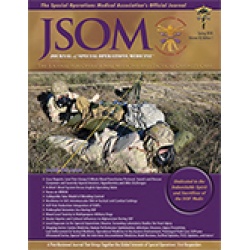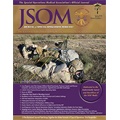Laboratory Model of a Collapsible Tube to Develop Bleeding Control Interventions
Griffin LV, Kragh JF, Dubick MA 18(1). 47 - 52 (Journal Article)
Background: To develop knowledge of mechanical control of bleeding in first aid, a laboratory model was set up to simulate flow through a blood vessel. A collapsible tube was used to mimic an artery in two experiments to determine (1) the extent of volumetric flow reduction caused by increases in the degree of compression of the vessel and (2) the extent of flow reduction caused by increases in the length of compression. Methods: Water was used in vertical tubing. Gravity applied a pressure gradient of about 100mmHg to cause flow. A silicone tube (10mm-diameter lumen [the inner opening], 1mm-thick wall, 150mm length) was used. Tests of no compression of the external wall constituted the control group for both experiments. For all groups, flow volume was sampled over a period of time, and six samples were averaged. In both experiments, the study group consisted of tests with compression that was measured as the reduced area of the luminal cross section. In the first experiment, six groups with luminal area reductions of 0% (control), 74%, 81%, 91%, 94%, and 97% were tested. In the second experiment at 74% luminal area reduction, the three lengths of compression were 5mm, 20mm, and 70mm. The measured data were compared with calculated data by applying established mathematical equations. Results: In the first experiment, flow decreased with decreasing area due to luminal compression, but the association was a parabolic curve such that 94% or greater reduction in luminal area was required to reduce flow by greater than 50%. A reduction in luminal area of 97% reduced flow by 95%. In the second experiment, mean flow rates were not significantly different among the three lengths of compression. Measured data and calculated data were in good agreement. Conclusions: Compared with an uncompressed vessel, volumetric flow of water through a single, unsupported collapsible tube in steady, nonpulsatile conditions with compression applied to its external wall to produce a reduction in luminal area of 97% reduced flow by 95%. Flow was affected by the degree of compression but not by the length of compression.


 Español
Español 




